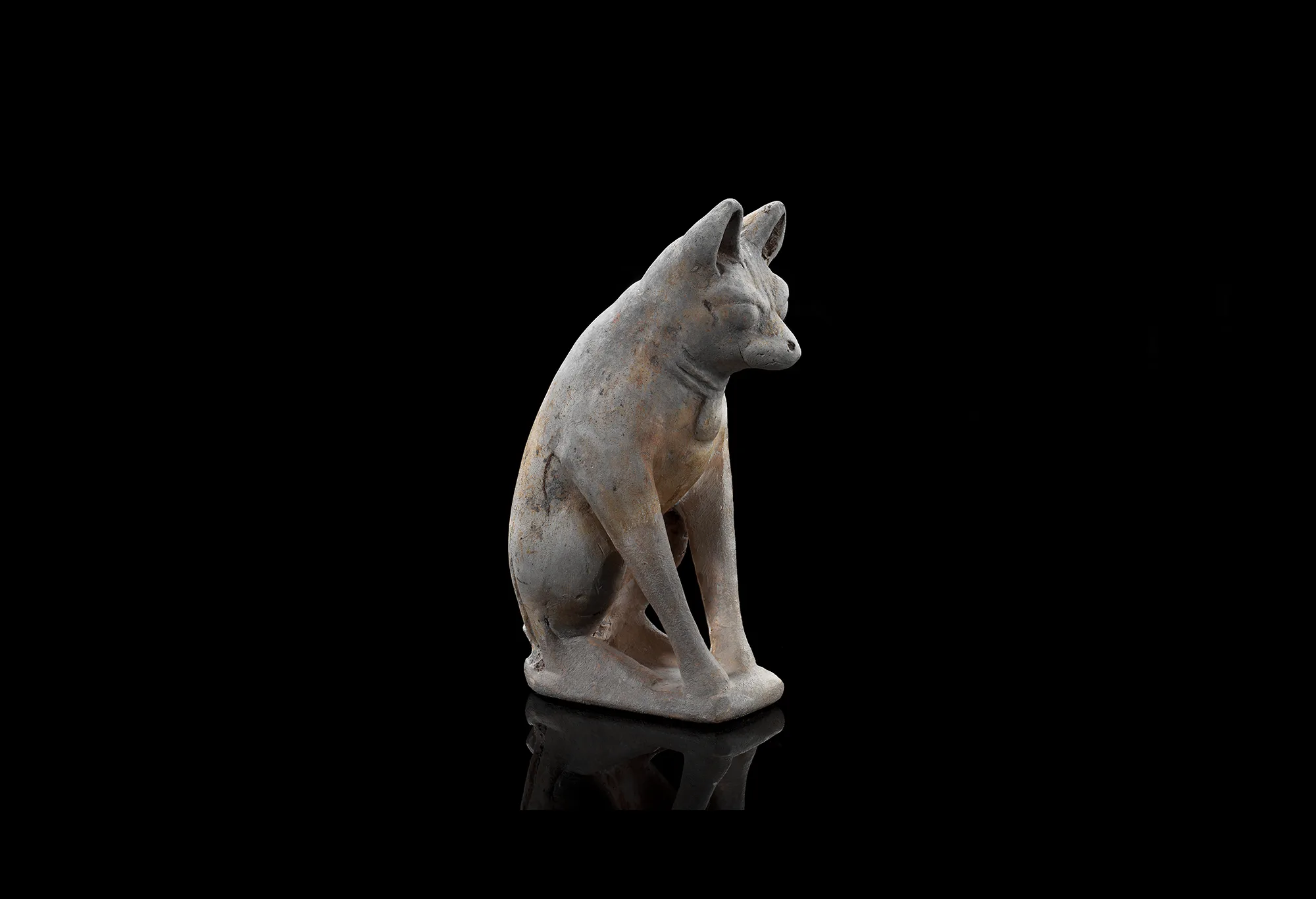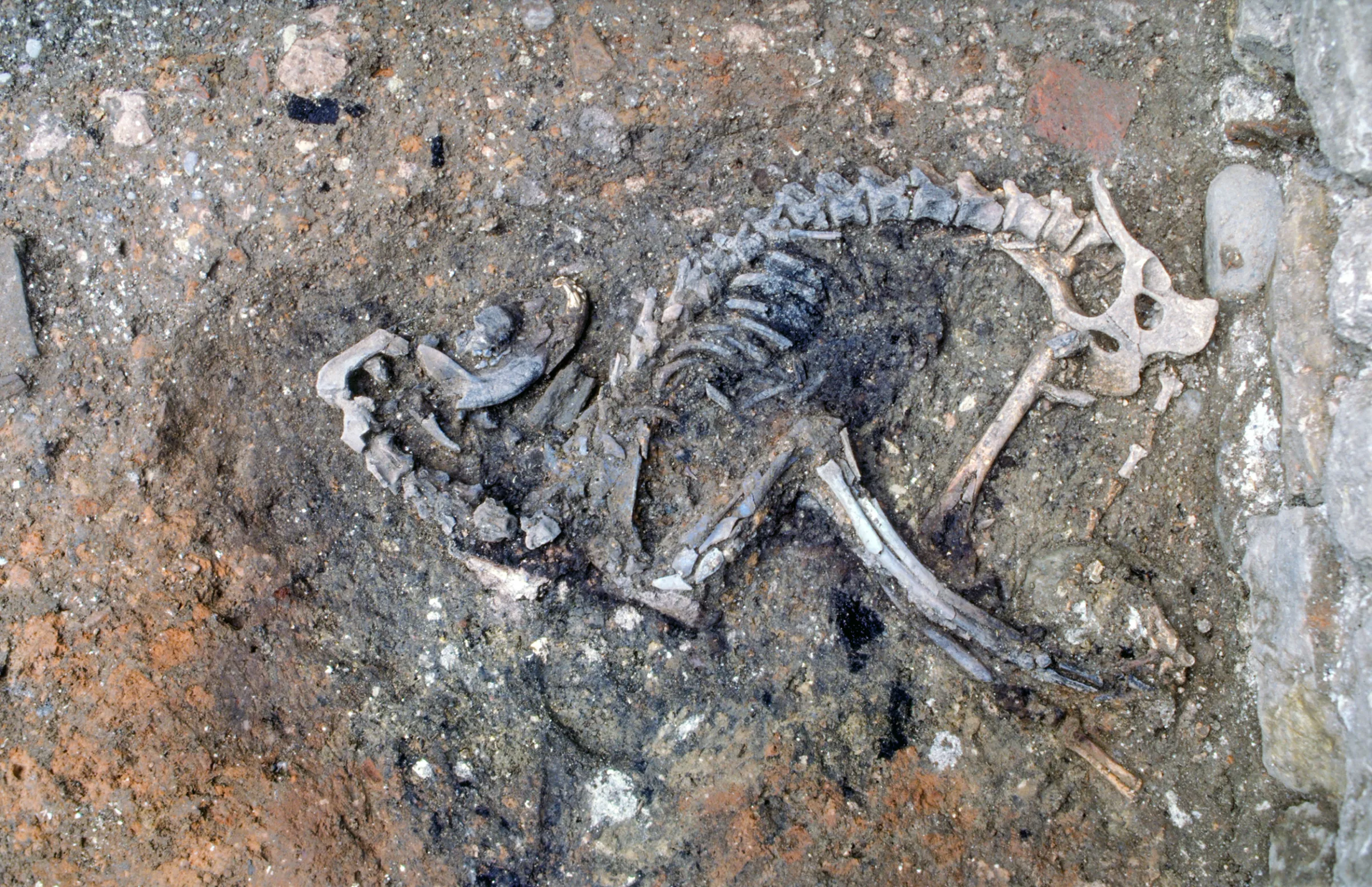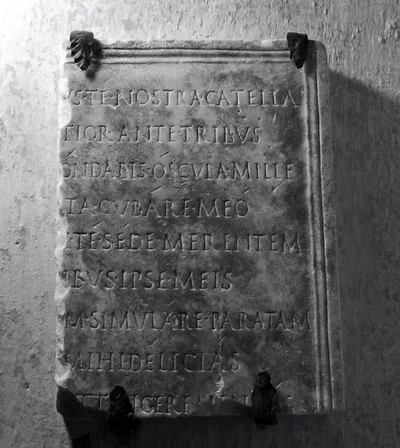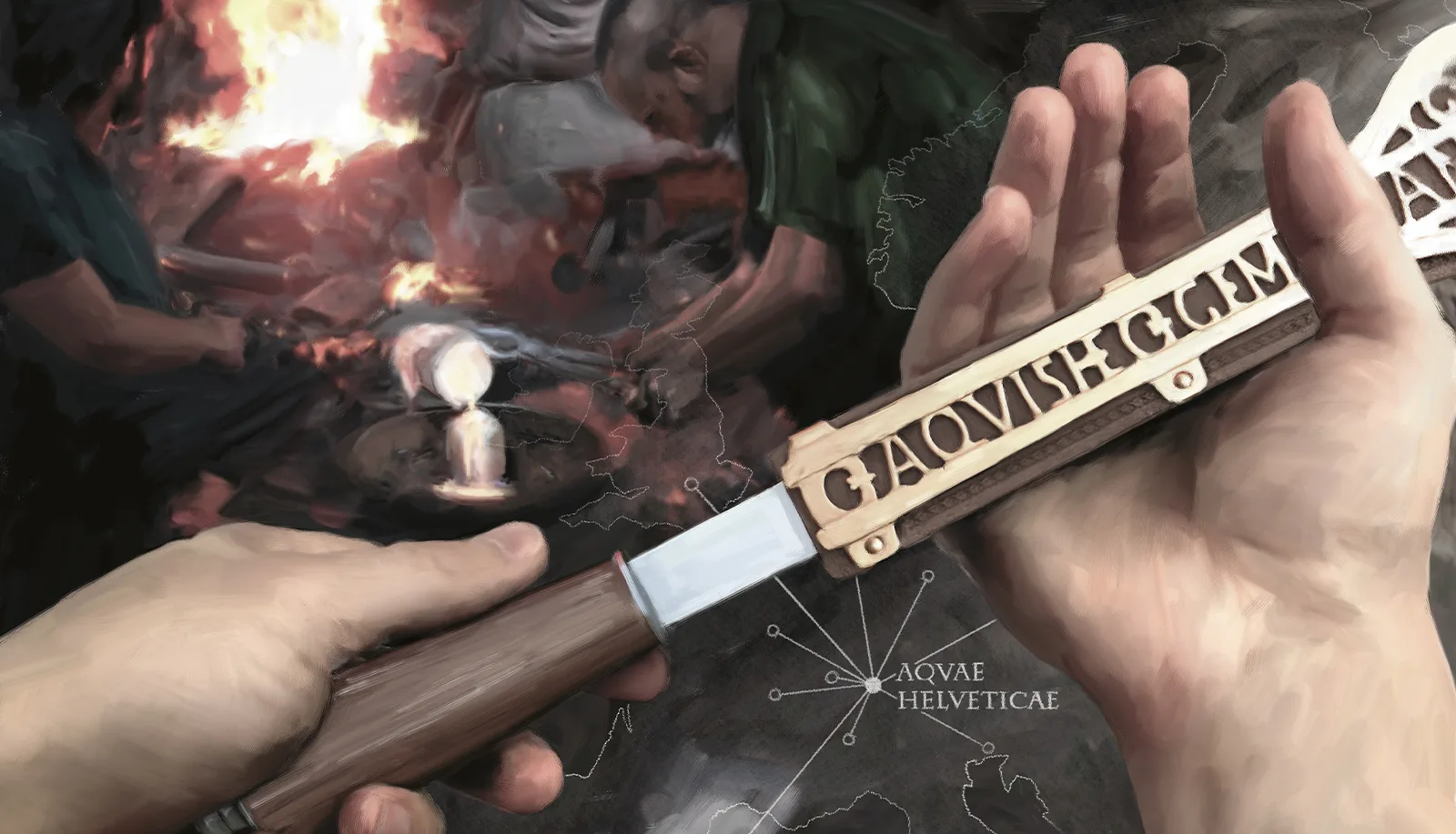
Swiss National Museum
Humans and dogs
Inscriptions, grave finds and remains bear witness to the enduring relationship between humans and dogs, extending across millennia.
Several years ago, excavations in Aquae Helveticae (present-day Baden and Ennetbaden) uncovered a building that was destroyed by fire in about 280 AD. Among the remains was the skeleton of a guard dog. Was it an accident, a moment of carelessness or even, perhaps, a raid? The fact that a silver-plated platter and a purse containing 30 silver coins were still hidden in the double floor of the house would seem to suggest a tragic event. The inhabitants must have fled for their lives, and didn’t have time either to retrieve their valuables or to let the dog off its line. The poor animal was probably asphyxiated in the fire, buried in rubble where it lay, and only rediscovered 1,700 years later.

Skeleton of a guard dog. Around 280 AD. Ennetbaden (Canton of Aargau).
Kantonsarchäologie Baden
An age-old symbiosis
In Roman times, the dog had already been a faithful companion to humans for millennia. Humankind has greatly influenced the evolution of the dog. In all likelihood, the reverse is also true. Research suggests that wolf and dog genomes separated about 35,000 years ago. In earlier times, wolves were companions to people to whom they had become accustomed. Individual wolves probably sought out proximity to humans, having learned that cohabiting with them brought advantages in the search for food. Humans, in turn, benefited from the wolves’ hunting behaviour and made use of their keen sense of smell. The sensitive social behaviour of wolves also made them ideal partners for humans. When people started raising domesticated wolf cubs, this set in motion a sequence of development which ultimately produced the domestic dog. What’s astonishing is that this development occurred in virtually all cultures and right across the globe, often in parallel.
The earliest evidence of domesticated dogs on the territory of what is now Switzerland is around 14,000 years old. Early dogs were still much more homogeneous in build and size than their descendants. In the Roman era, selective breeding produced different types of dogs, from small Pekinese-like breeds to dogs that stood more than 65 centimetres tall. Many dog breeds as we know them today were bred selectively at the beginning of the 19th century, and their characteristics precisely defined. Today, there are more than 300 recognised dog breeds.
More than just a pet
As long ago as the Stone Age, however, dogs were more than just guardians or hunting aids. This is evidenced by grave finds from the era of the Stone Age hunter-gatherers. Joint burials of humans and dogs reveal just how much the Stone Age population appreciated and valued these domestic animals, and how close the relationships could be. Countless inscriptions, such as this one on a dog’s grave in Salerno dating from around 100 AD, show that this was also the case during the Roman era:

It’s not just in our own era that the relationship between humans and dogs has been very close. A boy posing with a collie, ca. 1950.
Swiss National Museum

Burial of a woman with a puppy or wolf cub below her left hand. Ca. 10,350-9,000 BC. Ain Mallaha (Israel).
© Upper Galilee Museum of Prehistory
Thousands of sweet kisses you have given me
Never more will you kiss me
Never more will you slumber so
peacefully at my neck
Sorrowfully I lay you to rest in your own tomb of marble
That we may be together for eternityCIL X 659, from Keller, Otto: Die antike Tierwelt (Animals in antiquity). Leipzig 1909
We can therefore assume that the owners of the house in Aquae Helveticae, if they survived the disaster, mourned not only the loss of their silver coins but also, and even more so, the death of their pet. The skeleton of the guard dog is on display in the archaeology exhibition at the National Museum Zurich.

Inscription featuring a poem for a dog.
edr-edr.it



